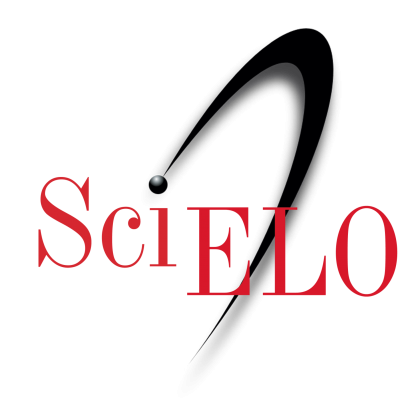DOI:
https://doi.org/10.14483/22487085.2929Published:
2011-01-01Issue:
Vol 13, No 1 (2011) January-JuneSection:
Research ArticlesCooperative structures of interaction in a public school EFL classroom in Bogotá
Estructuras cooperativas de interacción en el aula de inglés como lengua extranjera de un colegio público de Bogotá
Keywords:
estructuras cooperativas de interacción, mediación, habilidades de presentación oral, reducción del conflicto (es).Keywords:
cooperative learning structures of interaction, mediation, conflict reduction (en).Downloads
Abstract (en)
In deprived socio cultural contexts like those characterizing the suburbs of Bogotá, cooperative learning (CL) appears as an alternative to cope with student problems of interpersonal communication and conflict derived largely from gossiping, information distortion, and verbal aggressiveness that result in an inappropriate learning environment. As a result of implementing this action research study with 8th graders in a public school of Usme, in the southeast of Bogotá, students’ original negative influence over their peers turned into positive mediation, featured by peer monitoring, peer correction, and peer feedback. Such a change, which was evident in class audio and video recordings, as well as successful CL task development, occurred thanks to the joint establishment of rules for cooperative interaction with their corresponding roles, functions, times, and spaces immersed in the implemented CL structures of interaction. This way, students raised awareness of the crucial factors involved in effective oral communication and the importance of reporting information accurately for well-informed opinions and decisions. Students’ improvement in the oral communication processes contributed significantly to a better classroom social environment for learning.
Abstract (es)
En contextos socioculturales que brindan pocas oportunidades de promoción social como los que caracterizan a los suburbios Bogotá, el aprendizaje cooperativo aparece como una alternativa para afrontar los problemas estudiantiles de comunicación y conflicto interpersonal, ocasionados en gran medida por el chisme, la distorsión de información, y la agresividad verbal, que dan como resultado ambientes inapropiados de aprendizaje. Como resultado de la implementación de este estudio de investigación- acción, con estudiantes de 8º grado de un colegio público de Usme, al suroriente de Bogotá, la influencia negativa inicial de los estudiantes sobre sus compañeros, se transformó en mediación positiva, caracterizada por monitoreo, corrección y retroalimentación de pares. Tal cambio, que se hizo evidente en grabaciones de audio y video como en el desarrollo exitoso de tareas de trabajo cooperativo, se dio gracias al establecimiento conjunto de reglas para la interacción cooperativa, con sus correspondientes roles, funciones, tiempos y espacios, inmersos en las estructuras cooperativas de interacción implementadas. De esta manera, los estudiantes reconocieron los factores cruciales que hacen parte de una comunicación oral efectiva así como la importancia de la precisión en la información para llegar a opiniones y decisiones bien informadas. En ese proceso, los estudiantes recurrieron a una amplia gama de estrategias verbales y no verbales de presentación oral que les hizo desarrollar sub-habilidades necesarias para la presentación oral exitosa de información. El progreso en los procesos de comunicación oral de los estudiantes contribuyó significativamente a un mejor clima social en el salón de clase para el aprendizaje.
References
Aronson, E., & Patnoe, S. (1997). The Jigsaw Classroom: Building Cooperation in the Classroom. New York: Longman.
Aronson, E. (2008). The Jigsaw Classroom. Retrieved October 13, 2008 from http://www.jigsaw.org
Coelho, E. (1988). Cooperative group learning: A theoretical and Practical Overview. Colloquium presentation at TESOL, Chicago.
Cohen, E. G. (1986). Designing groupwork: Strategies for the Heterogeneous Classroom. New York: Teachers College Press.
Cohen, L., Manion, L., & Morrison, K. (2003). Research Methods in Education (5th ed.). London: Routledge Falmer.
Common European Framework for Languages: Learning, Teaching, Assessment. (2001) Council for Cultural Cooperation, Education Committee: Language Policy Division, Strasbourg.
Donato, R. & Lantolf, J. P. (1990). The dialogic origins of L2 monitoring. 1, Pragmatics and language learning, 1, 83-98.
Finocchiaro, M. (1983). The Functional/Notional Approach: from Theory to Practice. New York: Oxford University Press.
Gee, J. P. (2005). An Introduction to Discourse Analysis : Theory and Method. 2nd ed. New York : Routledge.
Goffman, E. (1993). La Presentación de la Persona en la Vida Cotidiana. (A Spanish translation of The Presentation of Self in Everyday Life, 1959). Amorrortu : Buenos Aires.
Greenfield, P.M. (1984). A theory of the teacher in the learning activities of everyday life. In B. Rogoff & J. Love (Eds.), Everyday cognition (pp 117-138).
Guerrero, C. H. (2007). Applications of the Vygotskyan Concept of Mediation in SLA. Colomb. Appl. Linguist. J. 9, 213-227.
Guzmán, E. (2006). Indiferencia hacia la Bogotá joven. Desde Abajo. Edición 110.
Johnson, D. W., & Johnson, F. P. (1987). Joining Together: Group Theory and Group Skills. Englewood Cliffs, NJ: Prentice-Hall.
Johnson, D. W. & Johnson, R. T. (1992). ‘Positive Interdependence, a Key to Effective Cooperation’, in R. Hertz-Lazarowitz and N. Miller (eds.). Interaction in Cooperative Groups: The Theoretical Anatomy of Group Learning. Cambridge: Cambridge University Press.
Kagan, S. (1989a). The Structural Approach to Cooperative Learning. Educational Leadership, 47, No. 4: 12-15.
Kagan, S. (1989b). Cooperative Learning Resources for Teachers. San Juan Capistrano, CA: Resources for Teachers.
Kagan, S. (1994). Kagan Cooperative Learning. SanJuan Capistrano, CA: Kagan Cooperative Learning.
Kemmis, S & McTaggart, R. (Eds.), (1988). The Action Research Planner. 3rd ed. Geelong: Deakin University.
Kemmis, S., & McTaggart, R. (Eds.) (1990). The Action Research Reader. Victoria: Deakin University.
Kessler, C. (1992). Cooperative Language Learning: A teacher’s Resource Book. Englewood Cliffs, N.J.: Prentice Hall Regents.
Kozulin, A. (1988). Psychological Tools. A Sociocultural Approach to Education. Cambridge, MA: Harvard University Press.
Lankshear, C. & Knobel, M. (2004). A Handbook for Teacher Research: From Design to Implementation. Glasgow: Open University Press.
Lantolf, J. (2001). Sociocultural Theory and Second Language Acquisition. Oxford: Oxford University Press.
McCarthy M. (1991). Discourse Analysis for Language Teachers. Cambridge: CUP.
McGroarty, M. (1993), Cooperative Learning and Second Language Acquisition, in Holt, D.D. (Eds.), Cooperative Learning, D.C. Center for Applied Linguistics ERIC Clearinghouse on Languages and Linguistics. Washington, DC, pp.19-46.
Mc Kernan, J. (1996). Curriculum Action Research. London: Routledge.
Mendoça, C. & Johnson, K (1994). Peer review negotiations: Revision Activities in ESL Writing Instruction. Tesol Quarterly, 28, 4:745-769.
MOSSAVI (2003). Modelo de Estrés Social para la Prevención y Atención de la Violencia Intrafamiliar. Alcaldía Mayor de Bogotá D.C: Secretaría de Gobierno.
Prieto, C. Y. (2006). Improving Eleventh graders’ Oral production in English Class through Cooperative Learning Strategies. PROFILE 2007 Issues in Teachers’ Professional Development. 8, 75-90.
Sharan, S., & Sharan, Y. (1976). Small-Group Teaching. Englewood Cliffs: Educational Technology Publications.
Slavin, R.E. (1990) Cooperative Learning: Theory, Research, and Practice. Englewood Cliffs, NJ: Prentice Hall.
Vygotsky, L.S.(1978). Mind in Society. : The Development of Higher Psychological Processes. Cambridge MA: Harvard University Press.
Webb, N. (1988). Small group problem solving: Peer interaction and learning. International Association for the Study of Cooperation in Education Newsletter, 9, No. 3 & 4: 11-12.
Wood, D., Bruner, S. J., & Ross, G. (1976 The role of tutoring in problem solving. Journal of Child Psychology and Psychiatry. 19, 89-100.
Yamashiro, A., & Johnson, J. (1997). Public Speaking in EFL: Elements for Course Design. Keio SFC University Publication Electronic sources.
How to Cite
APA
ACM
ACS
ABNT
Chicago
Harvard
IEEE
MLA
Turabian
Vancouver
Download Citation
Metrics
License
This work is licensed under a Creative Commons Attribution-NonCommercial-NoDerivatives 4.0 International License.
Attribution — You must give appropriate credit, provide a link to the license, and indicate if changes were made. You may do so in any reasonable manner, but not in any way that suggests the licensor endorses you or your use.
NonCommercial — You may not use the material for commercial purposes.
NoDerivatives — If you remix, transform, or build upon the material, you may not distribute the modified material.
The journal allow the author(s) to hold the copyright without restrictions. Also, The Colombian Apllied Linguistics Journal will allow the author(s) to retain publishing rights without restrictions.













.JPG)










